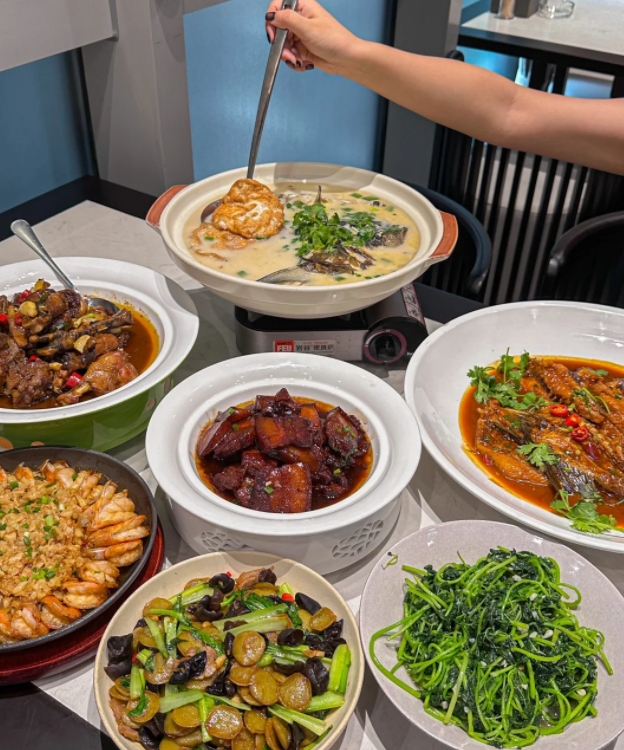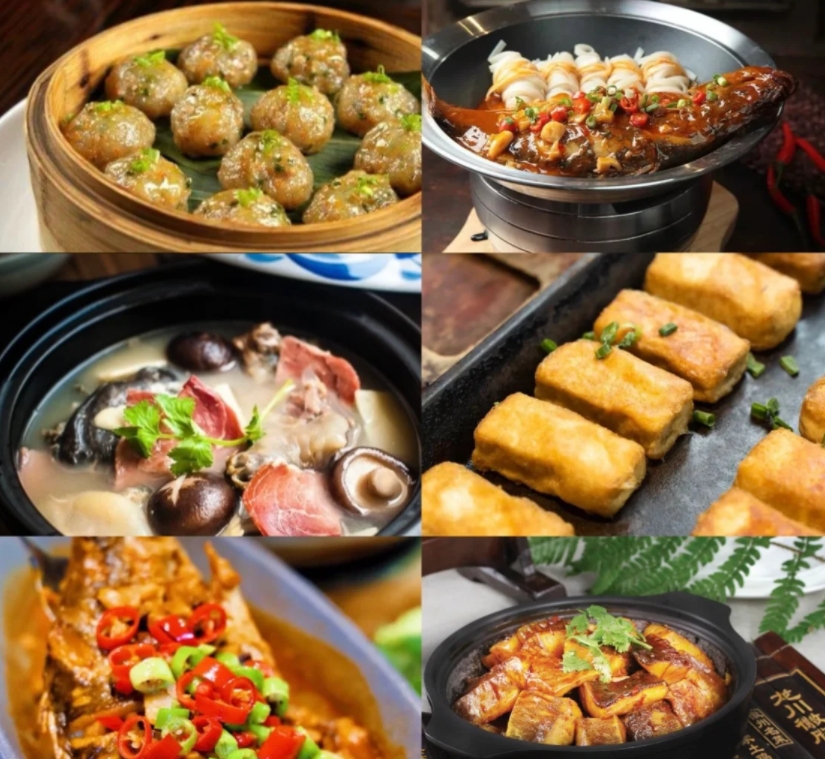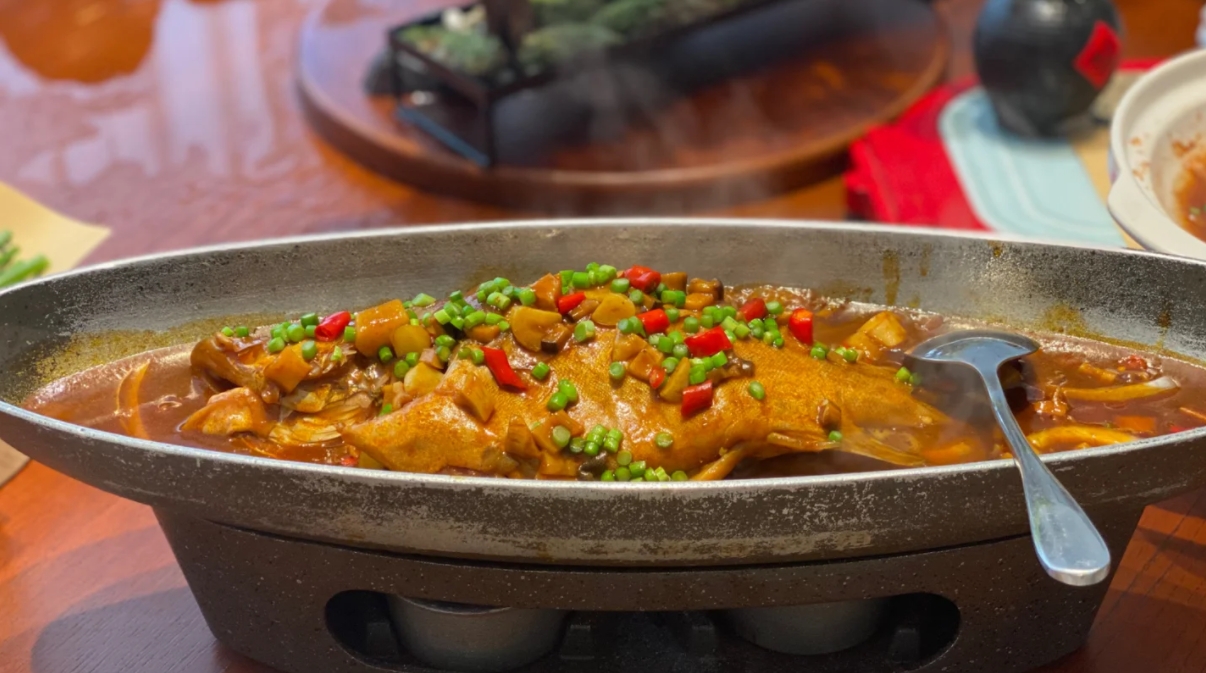Huizhou cuisine is an important source of Huaiyang cuisine, one of the top cuisines. Huizhou cuisine is not Anhui cuisine but the cuisine of Huizhou. In ancient times, Huizhou was roughly centered around Huangshan Mountain and also included the area of Wuyuan in Jiangxi Province. Huizhou began as Shezhou established in the ninth year of Kaihuang period of Emperor Wen of the Sui Dynasty and was changed to Huizhou in the third year of Xuanhe period of Emperor Huizong of the Song Dynasty.

Huizhou is located in a mountainous area with beautiful mountains and clear waters. The cultivated land is limited, and mountain delicacies are the main ingredients. With the migration of the central plains aristocratic families during the Wei, Jin, Southern and Northern Dynasties, relatively mature techniques, thoughts, arts, etc. were brought along, promoting the development of Huizhou culture and laying the foundation for later Huizhou Xin’an medicine and Xin’an Neo-Confucianism. This also gradually formed the cooking flavor of Huizhou cuisine.
Later, with the rise of Huizhou merchants, these merchants were extremely wealthy and had strong economic strength. Their footprints were all over the country. When they returned to their hometowns, they brought back the cooking flavors from various places to Huizhou, making Huizhou cuisine draw on the strengths of others and integrate various styles. Therefore, one can imagine the sophistication and refinement of Huizhou cuisine.

For example, Yipin Pot, a famous dish of Jixi, the dried cowpea should be simmered first with the soup of boiled streaky pork. The bamboo shoot pieces should be boiled with chicken soup. Then, streaky pork and chicken are placed around it. Egg dumplings, meatballs, and fried tofu are neatly arranged. Plus the original soup of boiled meat. In cold weather, having a pot of this makes every pore feel comfortable. Mr. Hu Shi is from Jixi. Yipin Pot is his favorite. When he was the president of Peking University, he often used this dish to entertain guests. Therefore, it is also called “Hu Shi’s Yipin Pot”.
There are also the famous three stones in Huizhou cuisine, namely stone fungus, stone frog, and stone moroko. Dishes made with these three stones as raw materials are all top-quality in Huizhou cuisine.
Stone fungus is similar in shape to black fungus and grows on cliffs 800 meters high. There is only one picking time every year, so it is particularly precious. Common dishes include chicken stew with stone fungus, old duck soup pot with stone fungus, etc.

Stone frog is a kind of wild frog that grows in the water and stone caves of alpine valleys. It is a treasure with the effect of prolonging life and having medicinal value. Wild stone frogs are second-class protected animals in the country and cannot be captured at will. Common dishes include braised stone frog, stone frog stew with stone fungus, etc.
Stone moroko is a small fish that grows in mountain streams. It grows slowly and weighs no more than three taels at most and is no more than 15 centimeters long. It has zebra stripes all over its body. However, stone moroko has been listed in the protection list and can no longer be eaten.
 【Must-Eat List of Traditional Famous Huizhou Cuisine】
【Must-Eat List of Traditional Famous Huizhou Cuisine】 ️Braised stinky mandarin fish
️Braised stinky mandarin fishA definite rice killer. Salty and fresh to the bone, the fish is pink and moist, extremely delicious.
 ️Hu Shi’s Yipin Pot
️Hu Shi’s Yipin PotA gospel for the dining tables of southerners. With numerous varieties, a combination of meat and vegetables, and a lingering aftertaste.
 ️Simmered sea cucumber seeds
️Simmered sea cucumber seedsPig trotters inlaid with thick whey protein. The soup is pure white and salty and delicious.
 ️Jixi stir-fried vermicelli
️Jixi stir-fried vermicelliAn indispensable delicacy on the table of Jixi people. The vermicelli is Q-bomb and smooth, with a strong fragrance.
 ️Dry pot stew
️Dry pot stewSelected black pork from southern Anhui. With every bite, the soup overflows and bursts instantly.
 ️Water-soaked cake
️Water-soaked cakeThe fragrance of beans mixes with the fragrance of meat, accompanied by the freshness of stone fungus. Full of the simple and pure breath of nature.
 ️Stir-fried Jixi yellow beef
️Stir-fried Jixi yellow beefA must-have for those who love rice. Stir-fried Jixi yellow beef is spicy and refreshing, with a rich fragrance.
 ️Jixi Dao Ban Xiang
️Jixi Dao Ban XiangThe fragrance spreads for miles. Fat but not greasy, with a long aftertaste.
 ️Jixi Three Stones
️Jixi Three StonesA traditional Huizhou dish so fresh that it makes your eyebrows fall off.
 Jixi Double Wonders
Jixi Double WondersWhen hairy tofu meets stinky tofu, it’s either strange or stinky.
 【Must-Eat List of New Huizhou Cuisine】
【Must-Eat List of New Huizhou Cuisine】 ️Imperial Huizhou Tofu (Fat Chicken Huizhou Tofu)
️Imperial Huizhou Tofu (Fat Chicken Huizhou Tofu)Tofu with the delicious fragrance of chicken. Melts in the mouth.
 ️Ham and bamboo shoot shred soup
️Ham and bamboo shoot shred soupThe freshest ingredients in Huizhou cuisine are all in it. Ham is salty and fragrant, bamboo shoots are fresh, and the soup is rich.
 ️Huizhou shredded eel
️Huizhou shredded eelA divine dish for going with rice. Extremely spicy and delicious, with a lingering aftertaste.
 ️Gold and silver trotters and chicken
️Gold and silver trotters and chickenThe pig trotters are soft and tender. The high soup incorporates the delicious fragrance of chicken. Every bite is like divine soup.
 ️Braised oxtail
️Braised oxtailOxtail that makes you suck the bones. Even the soup is not spared.
 ️Ham chrysanthemum tofu
️Ham chrysanthemum tofuChrysanthemums blooming on tofu. Exquisite knife work, comparable to a work of art.
 ️Ginseng and gelatin health preserving cup
️Ginseng and gelatin health preserving cupNecessary for health preservation. Nutritious golden soup, smooth and refreshing.
 ️Fish ball pot with head and tail
️Fish ball pot with head and tailThe fragrance spreads for miles. Fat but not greasy, with a long aftertaste.
 ️Lamb chops and stinky mandarin fish
️Lamb chops and stinky mandarin fishThe wonderful combination of lamb chops and stinky mandarin fish. A beautiful concerto of fragrance and stink.
 Salted and fresh.
Salted and fresh.Ham neutralizes the earthy smell of bamboo shoots, bringing out the delicious freshness to the extreme.